Sports are coming back—and, if all goes according to plan, soon. Some changes to the landscape will be temporary, but many are likely to last beyond the pandemic.
Since March, we have been wandering through a sports desert—an emptiness so vast that Czech table tennis some days ranked as the most-wagered sport worldwide. Over the last three months, sports have contorted themselves like Simone Biles, attempting to find creative ways to return. Their gymnastics recall a kind of Mad Libs, with phrases that can be reduced to sport or athlete + verb + bizarre concept. As in Jay Williams suggests holding the NBA playoffs on cruise ships. Or: UFC expects Nurmagomedov-Gaethje to happen on Fight Island. Or: South Korean soccer club apologizes for filling stands with sex dolls.
While European soccer and South Korean baseball may be back, whenever sports in this country return, some of the most cherished nuances and traditions will be suspended indefinitely, in some cases irretrievably. Even the very objects of play have seemed threatening lately. “There’s been so much speculation [that] the virus particle can even live on a ball,” says Dr. Brian Hainline, chief medical officer for the NCAA. “The working assumption is that it could be infectious.”
But then Hainline turns philosophical. “Sports is so culturally essential to what society is. It’s an expression of who we are as Homo sapiens from an evolutionary point of view. Sports provide a physical manifestation of hope. And when we have hope, it actually changes who we are, our own mental and physical health.”
The optimist in all of us (perhaps a diminutive figure of late) hopes sports return in full force sooner than later (we're looking at you, Major League Baseball). Some of the changes we see will prove temporary—the ball will, one day, be safe again—while others will prove permanent. Here are some of the ways our competitive landscape will look different:

1. SAY GOODBYE TO NON-REVENUE SPORTS
It was, for decades, the worst-kept secret in sports. Then, during the pandemic, it was articulated for all to hear. In the first week of April, Oklahoma State’s football coach, Mike Gundy, announced his desire to bring his team back to the training facility by May 1. Why? “[The players] are 18, 19, 20, 21 and 22 years old, and they are healthy and they have the ability to fight this virus off. If that is true, then we sequester them and continue, because we need to run money through the state of Oklahoma.”
There it was. Without the usual gloss about “student-athletes” or window dressing about “educational opportunities,” Gundy put it flatly. His young players were vital for commerce. And not just streams of it, but rivers running statewide. Gundy, of course, is a chief beneficiary of the unpaid labor. At $5 million per year, he’s the second-highest compensated public employee in the state. (The first: Oklahoma football coach Lincoln Riley, at $6 million.) But college football also benefits everyone from the concessionaires on game day who service the 123 suites at Boone Pickens Stadium to the Stillwater construction crews erecting practice facilities and weight rooms.
Here’s who else slurps from the trough of college’s so-called revenue sports: the colleges’ non-revenue sports. All those divers and golfers and wrestlers and hurdlers? All those preseason trips overseas and training tables and snazzy gear? They are, effectively, underwritten by the football and men’s basketball teams. When the going is good—to wit: OSU football grossed $52.2 million in 2018—few notice. But when there’s no football and men’s basketball to give the boat buoyancy, it takes on water.
Without revenue from March Madness, which was canceled, athletic departments shifted to cost-cutting mode. One example among many: Akron slashed 23%, or $4.4 million, from its athletic budget by discontinuing men’s cross-country and golf and women’s tennis at the end of the academic year. Or consider Division II St. Edwards University, in Austin, which cut many of its teams but told athletes that they could raise funds privately to have them restored. The target: $12 million for the programs to self-finance in perpetuity.
The economic hardship is compounded by the NCAA’s unilateral decision to give an extra year of eligibility to spring-sport athletes, whose seasons were cut short by the coronavirus. It was a rare PR win for the NCAA, but it didn’t go over well with athletic departments and coaches suddenly faced with bloated expenses, scholarship promises that would go unfulfilled and the prospect of turning away recruits.
Budgets will be stressed still further by the projected decline of media rights. As more Americans cut the proverbial cord will, say, the Big Ten Network still be able to charge each cable subscriber $2 per month? If not, what impact will that have on the conference’s athletic departments, which are accustomed to receiving more than $50 million in annual distributions?
Cutting the programs that don’t generate revenue might make sense on a balance sheet. But it will cause pain. It will anger alumni. It will erode the social fabric of not just the athletic department, but the campus at large. It will only add pressure on the NCAA to compensate the athletes who do generate revenue. And it will be complicated by Title IX challenges.
But make no mistake. For non-revenue athletes of all seasons, winter, likely, is coming.
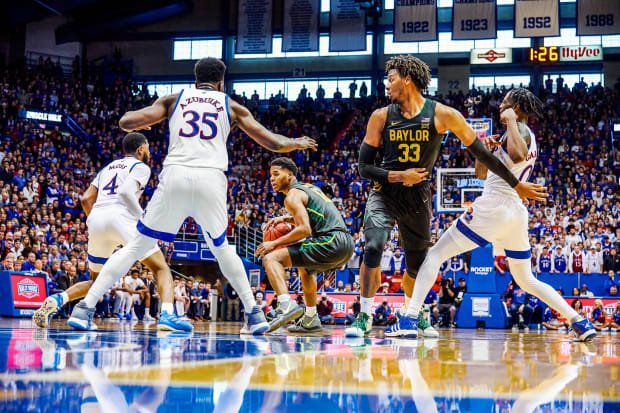
2. HAIRCUTS FOR COACHES
Speaking of college coaches and their salaries: Those could also be coming in for a trim. A 2019 analysis by ESPN found that the highest-paid public employee
in 40 states is either a football or men’s basketball coach. (In Hawaii, it’s University of Hawai’i staff surgeon Jay Boughanem, at $634,000; presumably he’s been busier these past few months than Alabama’s Nick Saban (at right), at $8.9 million.)
“The reason college coaches are getting paid the way they are is the athletes aren’t getting paid,” says sports economist Andrew Zimbalist. “As compensation to athletes begins to loosen up . . . the coaches’ salaries and executive salaries have to take some kind of a hit.”
Some of this change had already begun: In October the NCAA announced that it would allow college athletes to profit off their names, images and likenesses. (The public forced its hand: Two dozen states have bills to that effect wending through legislatures.)
But the devastation wrought by COVID-19 to state—and university—budgets will likely speed up the process. As athletic departments project revenue shortages of $40 million, in some cases, they have started to ask coaches to take pay cuts. Kansas’s Les Miles (who would have made $2.8 million), Louisville’s Scott Satterfield ($3.25 million) and Missouri’s Eliah Drinkwitz ($4 million) are among the football coaches who will forgo 10% of their salaries this year.
“It begins to change the psychology of the market,” says Zimbalist. In other words: When you pay someone less once, it becomes easier to do it again.
3. LONG-DISTANCE CALL
You might be looking live at Fenway Park or Staples Center or Soldier Field. But there might not be fans in the stands. And the broadcasters welcoming you, well, they might well not be there in person, either. Much the same way all those COVID-necessitated Zoom conferences have caused us to reassess the need for physical offices, network executives are wondering whether we really need broadcasters on site at sporting events. This trend has been quietly afoot for years. For the 2016 Olympics in Rio, for example, NBC had entire teams calling sports off monitors from the network’s production facility in Stamford, Conn. But for a combination of health and budgetary reasons, this is now likely to harden into S.O.P.
Relying on monitors presents a challenge to broadcasters. They feed off the crowds. Before the game they often pick up nuggets from coaches and athletes they sprinkle into a telecast. They get a feel for the atmosphere around the team or the town. “It can be done,” says Ian Eagle, a veteran broadcaster for a variety of networks. “But you have to supply your own energy.”
If broadcasters won’t be on-site, neither will the army of production soldiers—“the truck,” in TV parlance. “Outside of the Super Bowl or World Series or NBA Finals, for virtually every other sporting event, we will undoubtedly witness significant increases in what is called a REMI [remote production] broadcast,” says Ross Schneiderman, a longtime producer for NBC and CBS and now Tennis Channel, which has used that strategy for years (and where one of the authors of this piece is a contributor). The bet boils down to this: Even if fans notice, they won’t much care.
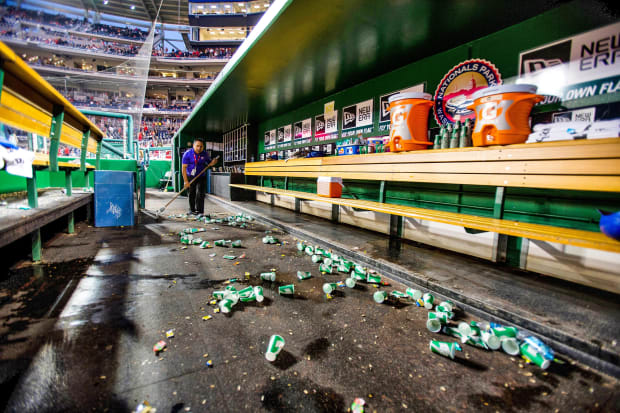
4. THE STADIUM CLEANS UP ITS ACT
Unless it’s a greeting extended to the NFL official named Steratore, hygiene isn’t exactly a phrase in heavy rotation at sporting events. Athletes bleed and sweat and, of course, spit heroically. Tennis players wipe their sweat and snot on towels. And then toss the linens to ball kids. Who are bare-handed. Halfway through the card, the mat inside the UFC octagon is, invariably, streaked with plasma and other bodily effluvia.
Then there are the fans. Packed tighter than matchsticks in a box, they take public transportation to games and, once there, think nothing of eating a hot dog after it’s been passed from the vendor and pawed by everyone in the row. Down lower, the lucky ones sit courtside, where sweaty athletes may end up in their laps, upending their popcorn. (Popcorn that’s often been shared with seatmates, who’ve scooped it with bare hands.)
And, of course, there are what are euphemistically called facilities. If you’ve never seen a stadium trough, consider yourself blessed. And yes, however lousy your team might be, rest assured its winning percentage dwarfs the ratio of men who wash their hands after using the aforementioned trough.
Sports are about to get the equivalent of a total makeover from the Health and Sanitation Department. The 67-page health and safety manual—67 pages!—that Major League Baseball compiled in May included a ban on players’ spitting and eating sunflower seeds. Infielders must social distance from base runners. Players are discouraged from showering on the premises. The NFL is considering a policy requiring everyone in uniform, including quarterbacks and kickers, to wear gloves.
As officials at tennis’s U.S. Open prepare to hold the event without fans, one proposal had all the seeded players getting their own luxury suites as private locker rooms. Hainline, the chief medical officer for the NCAA, says to forget “the old idea of just showing up in the training room or locker room.”
Instead, he says, access to facilities will be staggered: “You’re going to have a staged presence. The sanitization procedures are going to have to be exceptional.”
Crowds will, like it or not, be more hygienic as well. When fans are allowed back into venues they will likely line up for “temperature and symptom checks,” much as they lined up, pre-coronavirus, for security checks. Some changes will eventually fade, but why ever roll back on the soap dispensers and hand sanitation stations likely to be scattered through stadiums and arenas? Ballpark concessions are apt to change, too, favoring snacks that are individually wrapped. At least that still includes peanuts and Cracker Jack.
5. MUSCLED-UP WORKOUT SPACE
While the rest of us are curating our Netflix queues, strength and conditioning coaches across professional sports are designing new facilities within existing stadiums. MLB’s 67-page tome provides the most thorough set of health and safety regulations so far, but it won’t be the last, and all will likely call for some kind of social distancing in the weight room. For a lot of teams, that will mean expanding their current space. In some cases, it might mean hiring extra staff.
And it will also mean continuing to be creative. Stuck at home, many players have done more bodyweight exercises in the past few months than in the rest of their lives combined. When seasons resume, one MLB strength coach speculated, players may find that their new bodies work better than their old ones and keep some of their modifications. (It’s not for nothing that Tom Brady has spent years evangelizing his beloved pliability, mocking the heavylifting routines of his teammates.) Of course, the coach added, we won’t know for sure whether the changes worked until we see how their bodies withstand the stress of these bizarre seasons.
Either way, teams will likely keep their new, spread-out weight rooms. Says the coach, “If you told me that athletes could work in smaller groups, have more space, spend more time with a coach—regardless of pandemic, that’s a win.”
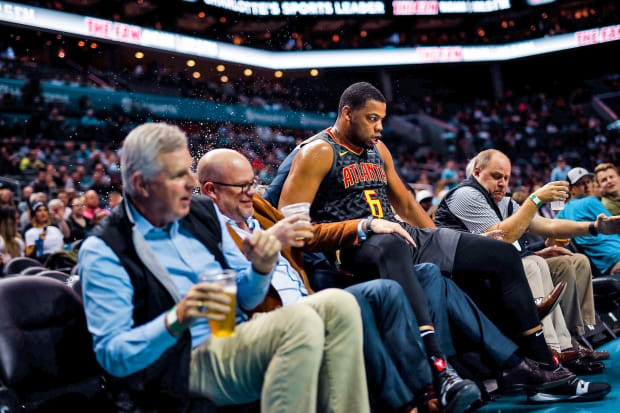
6. NEW MENTAL FOCUS
Staying in physical shape, check. But maintaining mental well-being may well prove a much greater challenge. Like so many, athletes are suffering from the stress of unemployment, lost earning power and dislocation—and, of course, the turmoil of recent police killings and their resulting protests. There are also existential concerns. When you self-identify as a competitor and suddenly can’t compete, what and who are you?
“In terms of layoffs and uncertainty, the closest [comparison] is when an athlete returns from an injury,” says Jonathan Katz, a sport psychologist who has worked for a variety of teams, including the NHL’s Rangers. “But there are some real differences. There’s no timetable and track record here. There are going to be a lot of psychological and emotional issues to returning. Athletes are great at compartmentalizing, but I think there are going to be great worries and distractions.”
Katz makes the point that athletes in team sports and individual sports will confront their plights differently. The former have the benefit of teammates and, often, a mental health support staff. But these sports have more physical contact and interaction. “Imagine what happens the first time the guy you’re guarding coughs or accidentally spits,” says Katz. Individual sports like golf, tennis, NASCAR and running may be safer and more be conducive to social distancing, but their isolation makes athletes more susceptible to mental health issues. “Bottom line,” Katz says, “there’s going to be a subtle but real invisible impact for athletes and a level of distraction that they are not used to dealing with.”
Inasmuch as there’s a silver lining, it’s this: After lagging behind the culture at large for decades, sports have started to confront mental illness and mental health. Teams and leagues, which were already showing signs of progress, can’t help but pay more attention to it amid the pandemic. The U.S. Olympic and Paralympic Committee’s new mental health task force, formed in February, came just in time to help athletes through the crisis. The NCAA has also prioritized athlete mental health for 2020 and developed a best-practices guide. And MLB mental skills coaches report holding regular group sessions over Zoom. In April, Cavaliers forward Kevin Love, who speaks with admirable candor about his anxiety and depression, put it this way on CNN: “This is really a pandemic that nobody’s talking about. I can’t [name] something that is a bigger thief of human potential. So it’s just incredibly important that we continue to speak and talk about the stigma.”
7. UNFULFILLED WISHES
Even if fans begin returning to stadiums, there is one group that will likely still have to stay away: people with underlying illnesses that put them at high risk of complications from the coronavirus. People like Make-A-Wish kids.
In a typical year, the foundation says, it fulfills some 500 sports-related wishes for children with serious illnesses. Usually the kids want to attend the NBA Finals or take batting practice at Yankee Stadium or meet Aaron Rodgers. The nonprofit’s top wish-granter is WWE star John Cena, who has met with more than 650 children. But these days most wishes are on hold. Kids who want a gaming computer or an in-home recording studio can still have theirs granted, but anything involving travel or being around other people has to wait. The organization has already postponed about 2,400 wishes; by the end of summer that number will be closer to 5,000. That’s especially painful for children who don’t have the luxury of time.
Make-A-Wish has set the most critical up with video calls with their heroes, and staffers have noted with surprise and delight that some have stretched to 45 minutes or an hour. Through another organization, Cena even paid an in-person visit—wearing a mask and gloves, of course—to a seven-year-old with kidney cancer who lives near his Tampa home.
The most vulnerable children will not be able to take batting practice in the Bronx any time soon. That means, for the foreseeable future, a lot of Zoom calls with Aaron Judge.
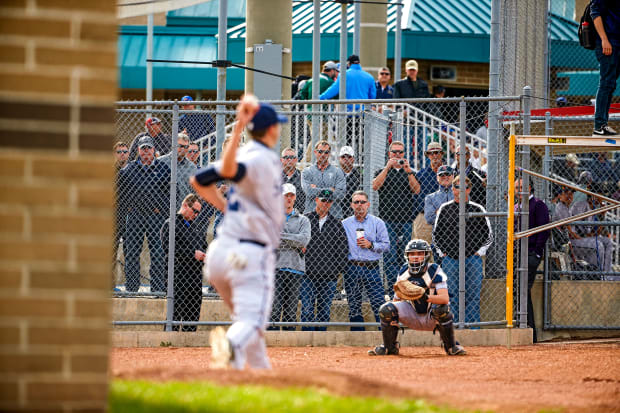
8. ROAD WARRIORS BECOME HOMEBODIES
In many cases, the pandemic will not spur change, but it will accelerate change that was already coming. Teams across sports were already beginning to realize that their scouts could accomplish almost as much in front of a computer as at a stadium—and for much less money. Now that scouts have been diverted to full-time video analysis, many may never return to the road.
Scouts generally fall into three categories: advance scouts, who focus on the teams their employer is scheduled to play; professional scouts, who try to get a sense of opposing players their teams may try to acquire; and amateur scouts, who search for talent their teams can draft or sign. NBA and NFL teams have primarily done pro scouting on video for years, but MLB has relied more heavily on in-person reconnaissance, in part because there are so many players at such varying levels. But now everyone has time to delve into film of every player.
“There’s so much video in all these teams’ databases,” says one baseball scout. “You could watch for years and never run out.”
9. DOC-TORED IMAGES
The Last Dance will, assuredly, not be the last of the (subject-approved) sports documentaries. Far from it. The 10-part Michael Jordan retrospective that aired on ESPN in April and May was a ratings success, averaging 5.6 million sports-starved viewers, making it the most-watched doc in the network’s history. And—as is always the case with ratings successes—it will be imitated by other networks, production companies and streaming services. Most notably, a nine-part Tom Brady docuseries, The Man in the Arena, has already been ordered up by ESPN for 2021, coproduced by TB12 himself. Multiple posthumous Kobe Bryant projects are reportedly in the works. In a May Hollywood Reporter poll gauging interest in other sports subjects, Muhammad Ali and Babe Ruth topped the list.
Sports documentaries are, in the industry parlance, evergreen content, which can air on any device and at any time, including during a global pandemic, when there are no games. They are not especially costly to produce—footage and licensing make up the greatest expenses—especially compared with ever-escalating sports-rights fees. They can also be packaged as part of broader deals with the athletes’ production companies.
But as Ken Burns, among others, noted when viewing The Last Dance with skepticism, the term documentary implies a level of objectivity and journalistic independence. That ceases to exist when the subject has approval over the material, as Jordan did. Which is why there is no mention of, say, his disappointing third act with the Wizards or reference to the breakup of his first marriage. But unless that exacts a toll on viewership, expect more high-wattage athletes, like Brady, to add producing credits to their résumés. The sports-documentaryL dance is just beginning.
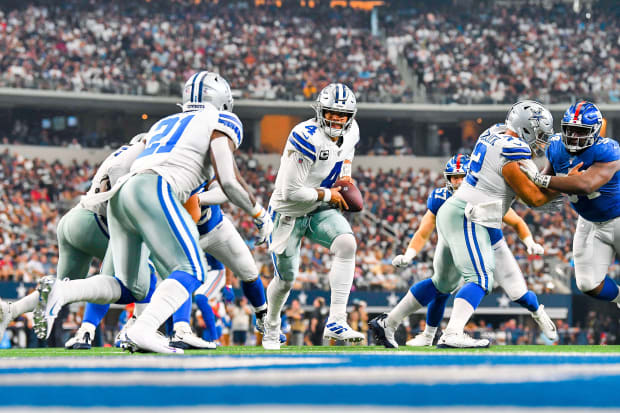
10. FROSTY FREE AGENCY
Cowboys quarterback Dak Prescott, Dodgers right fielder Mookie Betts and Bucks forward Giannis Antetokounmpo have had this offseason circled on their calendars for years. They are already fleet-of-cars wealthy, but their impending free agencies was scheduled to make them fleet-of-airplanes wealthy. And then the pandemic hit.
Salary-cap leagues such as the NFL, the NBA and the NHL set their ceilings and floors based on the past year’s revenue. MLB owners won’t officially be tied to profits from the 2020 season (if there is one), but you can certainly expect them to invoke poverty when negotiating. The players’ potential deals are further complicated by some of the collective-bargaining agreements: MLB’s expires after the 2021 season. The NBA can cancel its in September.
This is all bad news for the free-agent class of 2020–21. The most likely outcome is a flurry of one-year deals, sometimes known as pillow contracts. And that, in turn, is bad news for the free agent class of ’21–22. All of which is to say, years of teams’ carefully laid plans—whether to chase Giannis or Mookie or someone else—are all out the window. The ripple effects of the pandemic on rosters will be felt for years to come.


0 Comments